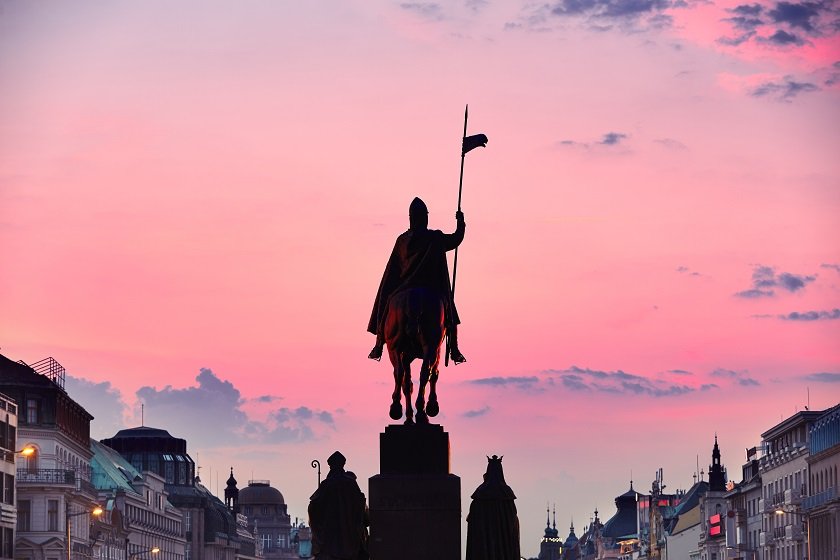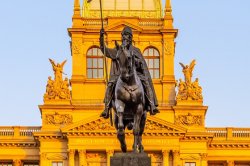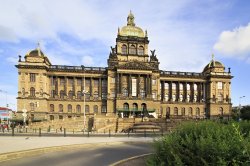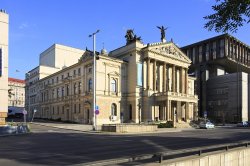Statue of St. Wenceslas
Statue of St. Wenceslas is a monument in the upper part of Wenceslas Square in the New Town district. Behind the statue, the whole square is dominated by the reconstructed building of the National Museum. The sculpture is considered a symbol of Czech statehood and one of the most famous sculptures in the country. It was built between 1887 and 1924. The basis is a seven-meter-high bronze equestrian statue of the patron saint of the Czech land St. Wenceslas, which was complemented by Czech saints. In front left there is the statue of St. Ludmila, behind her there is St. Agnes, on the other side stands the statue of St. Prokop and behind it a statue of St. Adalbert. The pedestal is made of polished granite and it bears the inscription, "Saint Wenceslas, duke of the Czech land, prince of ours, do not let us perish, nor our descendants". The author of the monument is the sculptor Josef Vaclav Myslbek, who worked on it for over thirty years. Statue of St. Wenceslas is perceived not only as a dominant of the square, but is also a popular meeting place. Originally the statue was supposed to stand on the ramp of the National Museum, but the author and the public protested until the original plans were abandoned.
Useful information for visitors
Public transport connections
Václavské náměstí tram stop
Opening hours and admission
Admission is free; the statue is freely accessible 24 hours a day, seven days a week.
Interesting facts about Statue of St. Wenceslas
A model for the horse from the Statue of St. Wenceslas was the author's military stallion called Ardo. The face of St. Vojtech was modeled after Archbishop František Schönborn, and as for St. Prokop's face, the author used his own face features. The familiar expression 'under the horse' is often used for this place, where several historically significant events took place. For example, on 28 October 1918 the Czechoslovak state was proclaimed in the words of a document read by Czech writer Alois Jirásek. The pavement in front of the sculpture was then embedded with the date 28. X. 1918.








